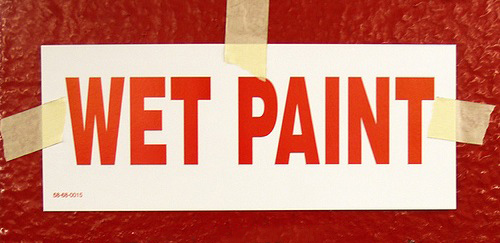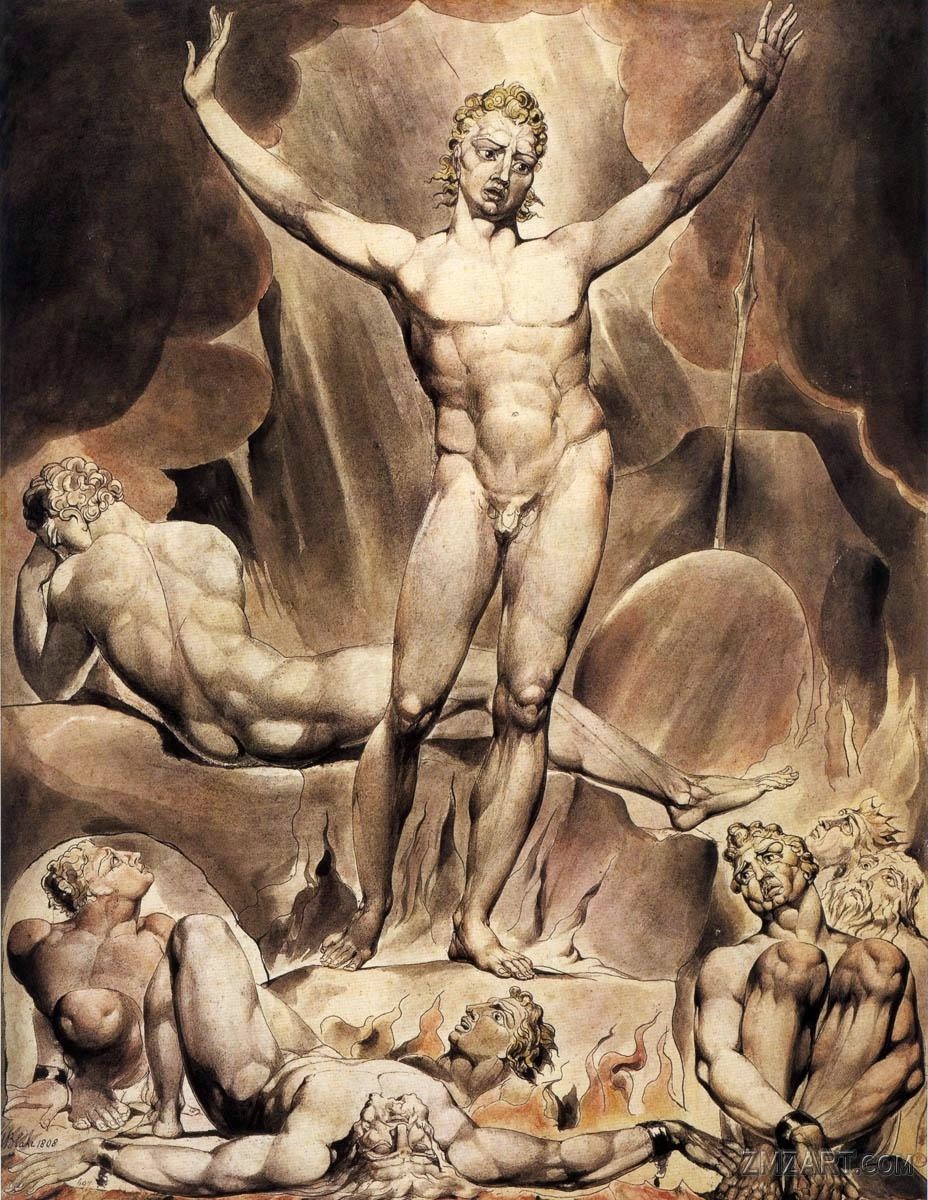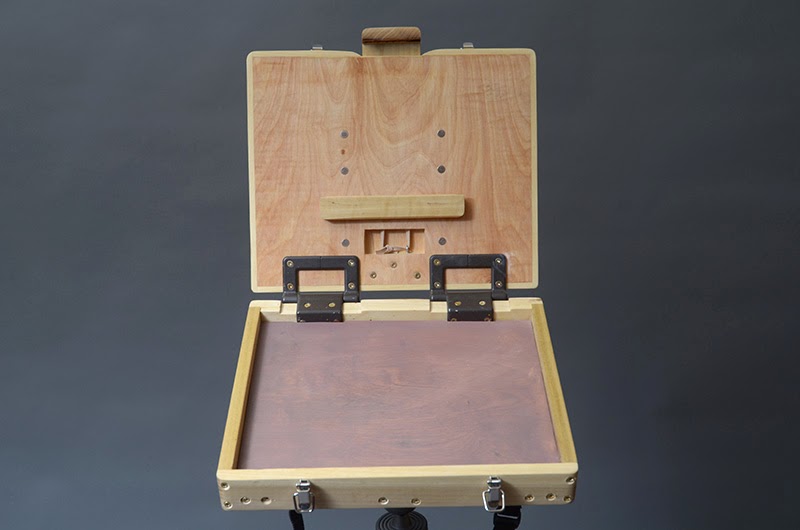Very frequently I get asked for advice from artists and non-artists who are parents of children who are developing artists. They ask for advice at many stages, and I thought since there are undoubtedly a number of parents reading Muddy Colors who might like to be able to refer back to advice on raising an artist. The parts are going to be a bit out of order, but we’re starting with the hardest bit: Admissions.
I know we’ve been debating whether Art School is worthwhile, but let’s assume you’ve decided that already and made your way through the flowchart. There are lots of reasons why Art School is very useful, especially if someone wants an education that is not just in art. Many universities have art schools within them, and it can be a way to continue an art education while combining it with another field of study. Perhaps you are in a place where education isn’t as expensive, or you aren’t going to be alone in shouldering the debt. Perhaps you want to go into a field of art that is more difficult to learn outside of an art school program. There’s still lots of valid reasons to go to art school, but then you have to deal with the dreaded application process.
Recently I had a friend ask my advice about their high school age child applying to art school, and I reached out to Jenna Kass, who worked in admissions at [redacted] A Major Art School for a number of years. She wrote up a fantastic email full of advice for my friend, from the admissions side of the fence, and it was so useful that I wanted to archive it here for everyone to access in the future:
From Jenna:
The school year has started, and that means seniors (and juniors, and some very enthusiastic sophomores) across the country and around the world are putting together portfolios for their art school applications.
This is a stressful time. While some art high school-aged artists are in arts magnet programs or have an outside art class or private tutor, many others aren’t — they might be coming from school districts with underfunded arts programs and have limited art classes, or don’t have enough money for outside art education, or are creating their art privately while facing pressure to focus on STEM subjects. In all cases, even for those with the best art background available, there’s contradictory advice coming from all angles on sketchbooks, variety of media, classroom assignments vs personal work, or even how many pieces to show.
I worked in an art school admissions office for four years, and I found myself giving a lot of the same advice. It’s my hope that by sharing some of it, I can help some young artists feel a little less lost about the whole process.
Some general advice
First of all, and above all, regardless of direction or major of interest: only show work you are passionate about, or at least pieces you can stand behind. If you hate it, they can tell. Reviewers can see the difference between class assignments a student completed under duress or because they felt they had to vs. personal work they loved or class assignments they were excited about. You don’t have to be across the board 100000% in love with everything in your portfolio, but you shouldn’t be including work which, if asked about, you’re embarrassed by or resentful towards.
How many pieces should you submit? As with all of this advice, there’s no One True Answer, but usually a reviewer wants to see 15-20 pieces. Please read each school’s portfolio requirements carefully! They should all have a section on their website which will let you know for sure.
Some high school teachers and private art tutors are certain colleges want to see as big a variety of media as possible; this is usually incorrect. Experimenting is great and a necessary part of growth, but your portfolio likely isn’t the best place to show it. If your focus is in watercolor and pencil, forcing in a comparatively weak oil painting and sculpture just for the sake of having variety is going to waste space in your portfolio and make it look weaker overall.
Check the school’s stance on sketchbooks. Some of them love seeing sketchbooks during in-person meetings but prefer reviewing only finished pieces in the portfolio review itself. Other schools specifically want to see your sketchbook work. If you have what you consider to be finished work in your sketchbook, or you feel strongly about including pages or spreads, you can add them to your portfolio — just be aware of your limited space! (Also, unless specifically requested, never mail in your actual physical sketchbook. Returns are not guaranteed!)
It can be helpful to have a place to take notes on each of the different schools you’re applying to, because every school wants slightly different things beyond what I’ve mentioned here. Whether it’s just reading their sites carefully, reaching out to an admissions counselor, or go to a National Portfolio Day event, you’re going to get a lot of information which might not be universal.
What to put in your portfolio
Just as you shouldn’t contact an Art Director for a sci-fi imprint with a portfolio full of medieval elves, you need to make sure your portfolio matches the school and program you’re applying to. Here’s some advice on tailoring your portfolio, but as with all of this column’s advice: read each school’s actual portfolio requirements!
(Due to the truly huge number of possible visual art majors, I’ve focused on the ones I assume most readers of Muddy Colors would be interested in. I apologize if I leave out your area of interest!)
Direct Observation
Most schools are going to want direct observation work regardless of major of interest, and some have a minimum number they want. It doesn’t matter how non-realistic or cartoony your art is; it’s about showing a foundation.
This doesn’t have to be (and shouldn’t be!) lifeless and forced. Find things that interest you: a group of objects which are meaningful or cool-looking; a lighting situation that fascinates you; a self-portrait in which you really try to share who you are; scenery (nature, a particular room or bit of architecture) that you feel a specific emotion about; or a portrait of someone you love or think is visually interesting. These examples aren’t exhaustive and shouldn’t be taken as a To Do List to check off, but instead as a starting place to get you thinking. You can even in many cases incorporate imaginative elements to your direct observation, just as long as your work is mostly from reality.
If you’ve done life drawing/painting, that counts! Some colleges ask you to select your favorites and collage them into one or two images; others are happy for you to present them individually to fulfill a minimum direct observation requirement. Regardless, it’s a good idea to include some examples if you have any.
I would also strongly suggest to avoid working from photographs for your direct observation work. There’s usually a lot of information lost between life and a photo, and if it’s not your photo then someone else has already made the decisions about lighting, angle, and framing that reviewers are interested in you making.
Applying to Fine Arts
If you’re applying to a conceptual fine arts program, I’d use the rest of the space showing your work in this area (and if direct observation work isn’t required, obviously use your entire portfolio for your conceptual work). If you’re working in 3D, whether that means sculpture or installation or otherwise, take several shots of each piece — different angles, scale, details, whatever you feel is important — and collage them together into one or two images. Since most schools have an upper limit on number of images/slides you can submit, you don’t want to use too many on one piece.
If you’re applying to a figurative fine arts program, everything should be focused in that direction. If you really like drawing from the imagination in your spare time but want to focus on the figure for your schooling/career, your portfolio shouldn’t include any imaginative work unless it heavily features your figure work.
Applying to narrative majors: Illustration, Cartooning, Animation
The most important thing to keep in mind here is if you’re interested in narrative, you need to show it!
Telling stories with your work doesn’t mean that you need to include literal stories, but it does mean you need to be considering the context of what you’re presenting. A character turnaround sheet should give a real sense to the environment and personality with the details you include; an illustration should be a single moment implying a surrounding story or emotion; a comic should give us a sense of a larger picture it is just a glimpse of. These aren’t hard and fast “should”s, but keep them in mind: even work you consider one-off or isolated from any wider narrative has its own substance.
If you’ve already been creating original stories or characters, that’s absolutely something to include in your portfolio! This will communicate that you’re already working narratively. Whether this means illustrating your story as a series of book covers, showing a section of an ongoing comic you’re working on, storyboarding scenes as you’d want to see them animated, or something else entirely, you’ve already got your sandbox ready to play in.
On the other hand, if you don’t have your own story, you’re not at all out of luck. If you want create art “just” for the sake of making something beautiful or sad or scary, that’s an opportunity to experiment with conveying and eliciting emotion. Making work based on a favorite book or an urban legend or your own life is an excellent way to explore narrative and make it yours. (While fanart can be one way to do this, be careful to use it as a tool and not as a crutch. If you’re going to create an illustration including your Gemsona, for example, why is it in Rebecca Sugar’s style instead of in your own?)
If you’re applying to an animation program, you should strongly consider including motion work, ie actually animating something. Not everyone has access to animation programs, but even a post-it note flip book demonstrates to reviewers you’re thinking in motion. They don’t have to be complicated: a bouncing ball or basic walk cycle shows this. If you feel that you can’t create motion work, you can try storyboarding or creating an animatic, tutorials for which can be explored online.
A note on Illustration: I focused on narrative illustration given the context of Muddy Colors, but it should be said that many programs have opportunities to go in directions other than narrative. Editorial illustration is significantly more conceptual, for example, and values clever solutions to briefs which can be boring or odd or nebulous, while scientific illustration requires strong detail and research skills and faithful interpretation of data. I won’t go into all the variations out there, but it’s something to keep this in mind when researching colleges.
In closing…
There are all sorts of “rules” for an art school portfolio, but the most important thing is to remember that it’s yours. In many cases, this is an admissions officer’s only chance to get a glimpse into who you really are; after all, grades and SATs and even personal essays can’t tell them very much at all about your art.
Your portfolio isn’t going to be perfect, but it should be a collection of the best you can do. Your ability and passion should be on display, no matter what. It’s a vulnerable place to be, and not everyone is going to love your art — but if you don’t put yourself out there, when will you? Getting into art school is just one step on the path to a career, and not even necessarily the first step or the only path. Learning to commit yourself to what you make and presenting it unapologetically shouldn’t wait for some hazy, distant “someday”.
Take what you will from the suggestions above and work with the various schools’ requirements, but remember: this is your portfolio. This is your art! Never forget it.
Thank you so much, Jenna for helping out high school students and their parents with this very helpful post!










This was really well written and informative. Thank you. I also learned about atelier programs which are small schools that focus solely on creating fine art. Mainly representational art. There are a couple really good ones in Seattle that are three year intensive programs. The students start with drawing figure and cast studies for the first year. Introduce value studies in paint for year two and color in the final year. The work these students do is beautiful. Some even represented in ARC ( https://www.artrenewal.org/ ) You won’t learn the business end of things but the skill learned is invaluable. IMO. I also learned, late, to look at the instructors’ works and find those that work in a style that inspires.
I need to add that those atelier schools are all over, and not just in Seattle.
I must say it is very well written; the blog held all the precise information about theOTT platform Development Company